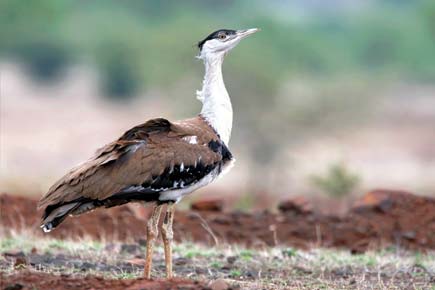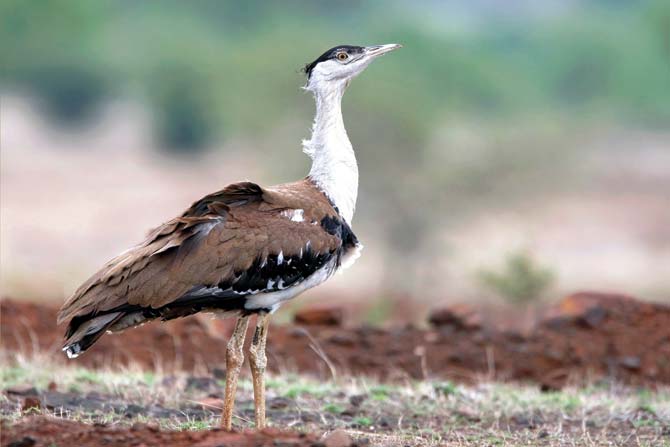The first-ever coffee-table book dedicated to the 'critically endangered' Great Indian Bustard was released during the IUCN World Conservation Congress 2016

The first-ever coffee-table book dedicated to the 'critically endangered' Great Indian Bustard was released during the IUCN World Conservation Congress 2016. This book has been published by The Corbett Foundation and authored by Dr. Asad Rahmani, renowned ornithologist, and co-authored by Devesh Gadhavi and Kedar Gore.
ADVERTISEMENT
 Great Indian Bustard
Great Indian Bustard
The book was released by (Ms) Aban Marker Kabraji, Regional Director, IUCN Asia during the IUCN World Conservation Congres (WCC) that was held in Hawaii, USA from 1-10 September 2016.
A Knowledge Café session was jointly organised during by The Corbett Foundation, Wildlife Institute of India and IUCN to highlight the conservation issues faced by the resident Bustard species of India – Great Indian Bustard, Lesser Florican and Bengal Florican. Though all three species are under threat, the Great Indian Bustard is the worst affected and not more than 250 individual birds remain in the wild in India today. The major reason for this bird's decline is the habitat loss due to several anthropogenic and developmental pressures, in addition to many other threats. These birds are found only in fragmented habitats in the states of Rajasthan, Gujarat, Maharashtra, Karnataka and Andhra Pradesh. Rajasthan has the highest population and the Kutch region of Gujarat has the second highest population. If immediate conservation measures are not taken, the Great Indian Bustard might face extinction. The Government of India has recently launched its Endangered Species recovery Programme and the Great Indian Bustard has been included as one of the four species.
The coffee-table book is the only popular publication so far published that captures the entire life history of the Great Indian Bustard.
Conservation of Great Indian Bustard
A mere 50 years ago, India was home to over a 1000 birds, but today it is estimated that there are less than 250 left in Rajasthan, Gujarat, Karnataka, Andhra Pradesh and Maharashtra. Their rapid decline has been put down to several factors, but the most important is the loss of their feeding and breeding habitats. The most of the habitat that they survive in are termed as ‘wastelands’ in Government records and is therefore given away for any developmental purposes.
The Corbett Foundation, a non-governmental organisation established in 1994 by Dilip Khatau for the conservation of wildlife, has been working tirelessly in Gujarat to protect the Great Indian Bustard and ensure its survival into the 21st century. The organisation has concentrated its efforts on getting both the state and central governments to hand over wasteland to the forest department for the creation of vast and contiguous habitat for the Bustards and other grassland species.
Specifically, The Corbett Foundation has focused on a few areas that are prime bustard habitat in Abdasa taluka of Kutch district in the state of Gujarat. In 2012, TCF prepared a report on the need for the acquisition of this land by the Forest Department and submitted it to various Government Agencies. The report described this land’s role as prime habitat, not just for the Great Indian Bustard but a number of other grassland species, including the Lesser Florican and MacQueen’s Bustard. It’s hard not to be moved by the plight of the Bustards, we now need to take immediate and deliberate action to ensure that this enigmatic and evolutionarily distinct species doesn’t disappear forever from the face of the Earth.
 Subscribe today by clicking the link and stay updated with the latest news!" Click here!
Subscribe today by clicking the link and stay updated with the latest news!" Click here!






